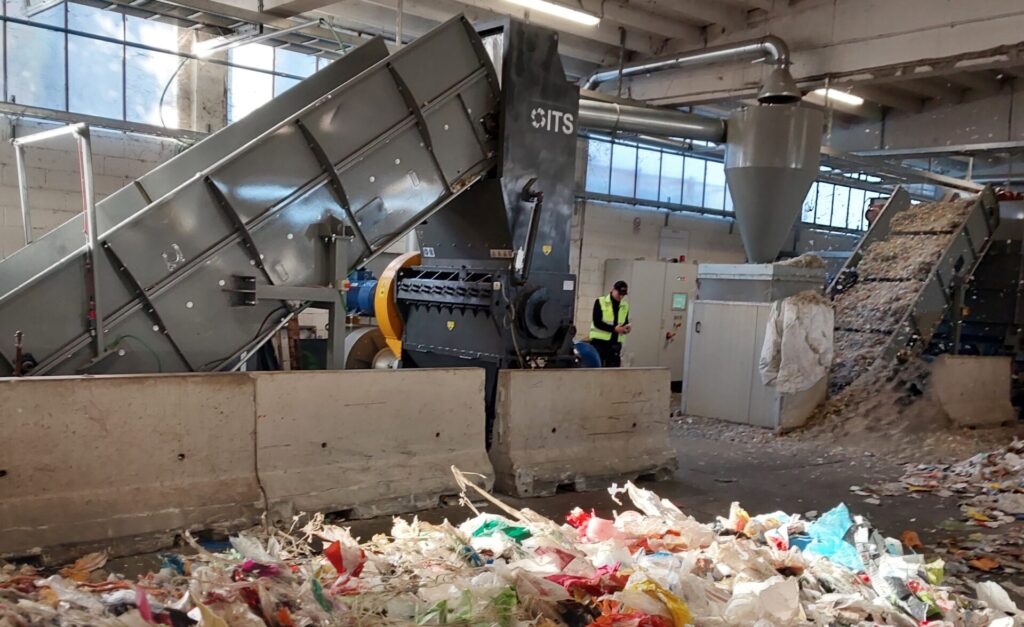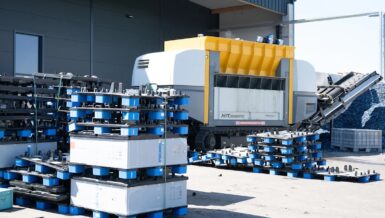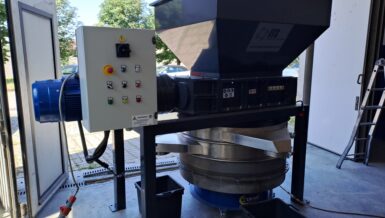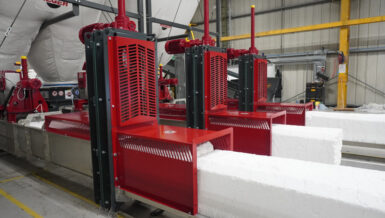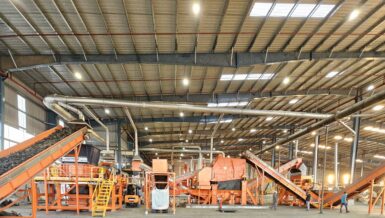A recent project highlights how the right grinding technology—equipped with ITS’s robust staggered blade rotor design—can turn mixed post-consumer plastics into high-quality secondary raw materials ready for industrial reuse.
The Challenge: From Mixed Plastics to Reusable Resources
Post-consumer polyethylene (PE) and polypropylene (PP) arrive in multiple forms: bottles, films, rigid packaging, and household items, often contaminated with dirt, labels, or residues. Their variability in shape, thickness, and rigidity makes them difficult to process directly in washing and drying lines.
Oversized fragments resist proper cleaning, irregular shapes slow down drying, and unstable feed rates disrupt extrusion and pelletizing. To stabilize the flow, the plastics needed to be reduced to a uniform size of around 40 mm.
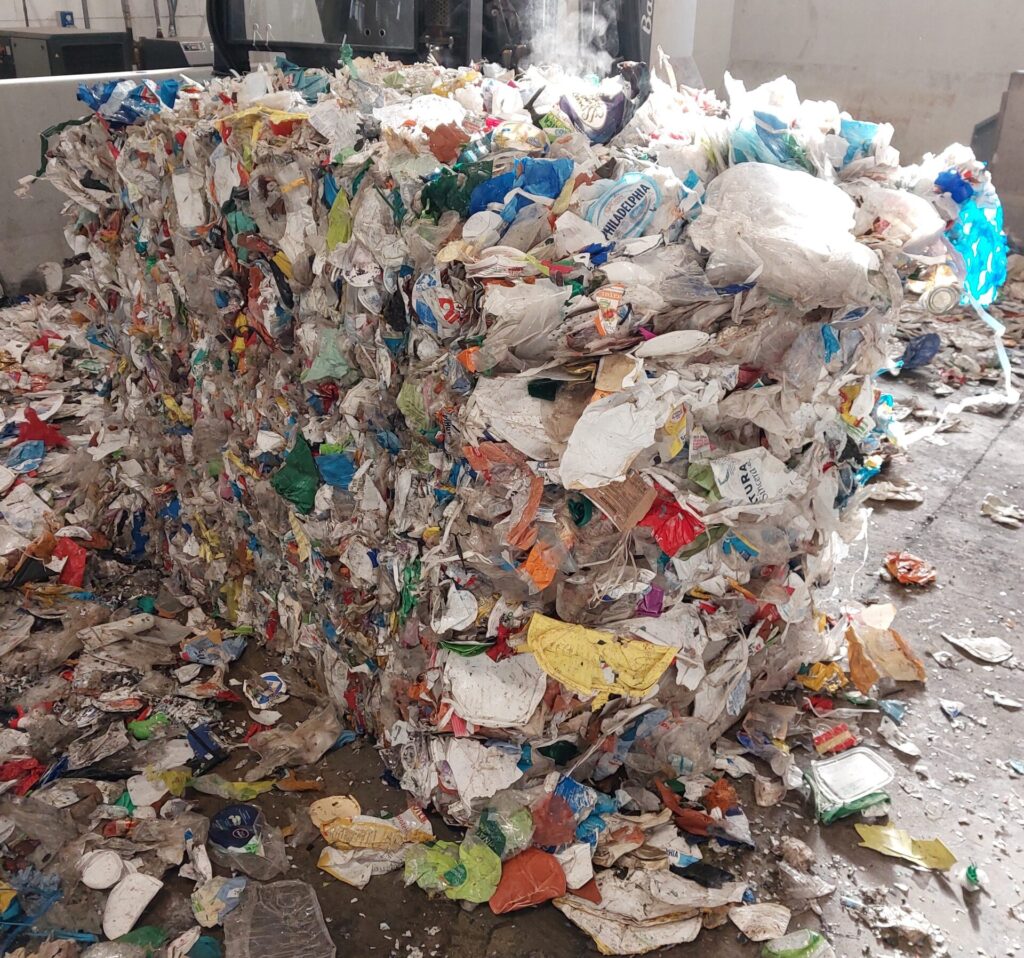
The Solution: Staggered Rotor Blade Technology
ITS supplied a heavy-duty grinder designed to handle 2 tons per hour of mixed plastics. At the heart of the solution is a staggered blade rotor—engineered for strength, durability, and precise cutting performance.
- Efficient cutting – The staggered rotor and knife configuration ensures steady grip and effective reduction of bulky or irregular plastics without clogging.
- Consistent particle size – A screening system guarantees uniform 40 mm output, essential for reliable washing and drying.
- Continuous-duty operation – The grinder runs at high capacity with stability, matching the pace of industrial recycling lines.
By reducing variability at the start, the ITS grinder created a predictable and stable material flow, unlocking greater efficiency in all downstream stages.


The Results: Certified Secondary Raw Materials
Once size reduction was optimized, washing and drying performance improved significantly. Uniform fragments allowed faster decontamination and consistent moisture removal. Clean, standardized plastics then moved seamlessly into extrusion and pelletizing, producing certified secondary raw materials (materie prime seconde)—mainly PE and PP—ready to be reintroduced into new production cycles under the Plastica Seconda Vita certification.
Conclusion: The First Cut Defines the Final Quality
This project shows how ITS’s staggered rotor blade grinders do more than reduce material size. They enable recycling plants to operate efficiently, lower costs, and deliver market-ready raw materials that support circular economy goals.
For operators, the lesson is clear: investing in the right size reduction technology means unlocking the full potential of post-consumer plastics as valuable, certified resources.


